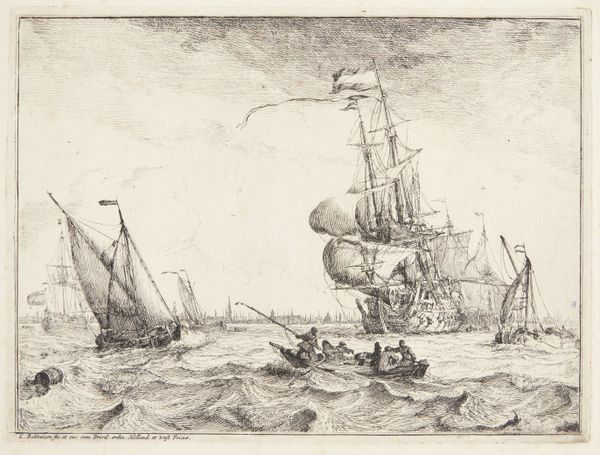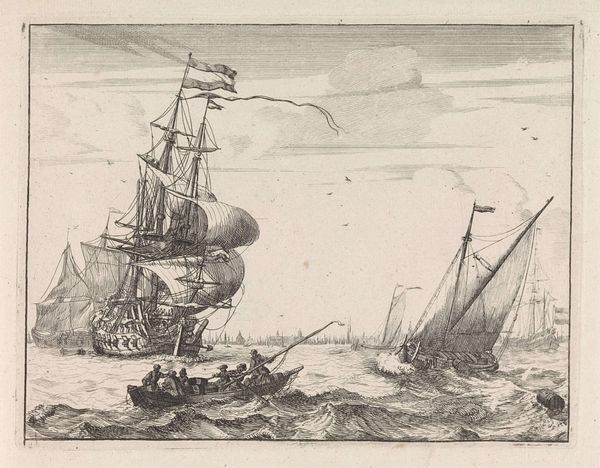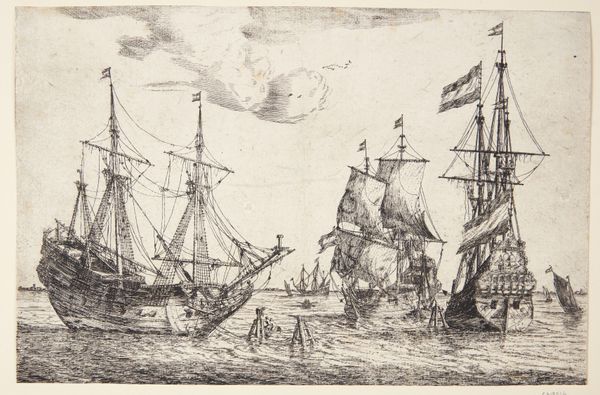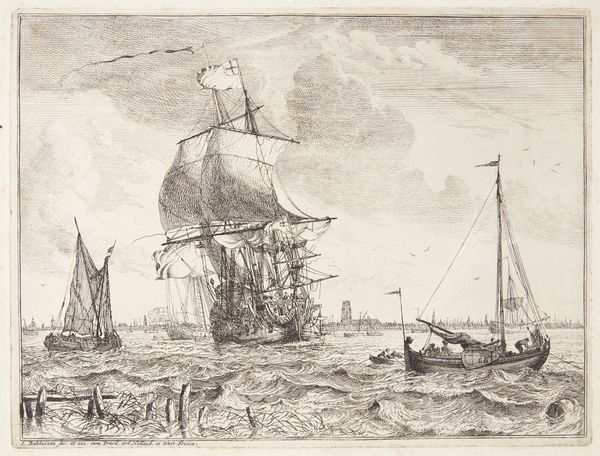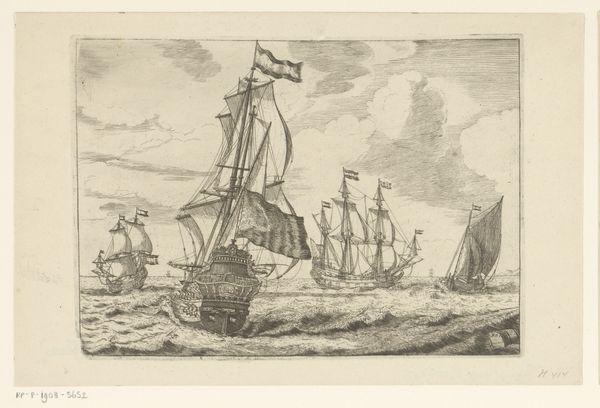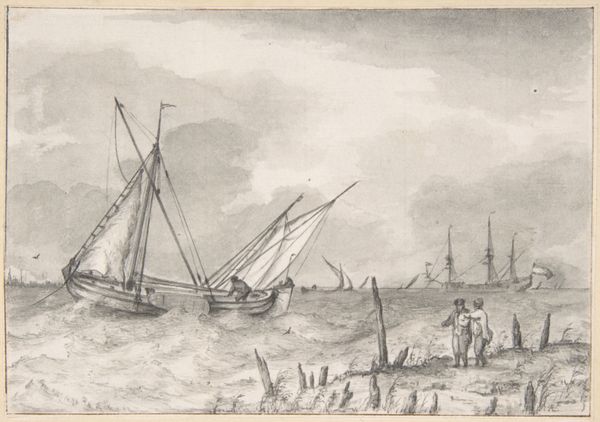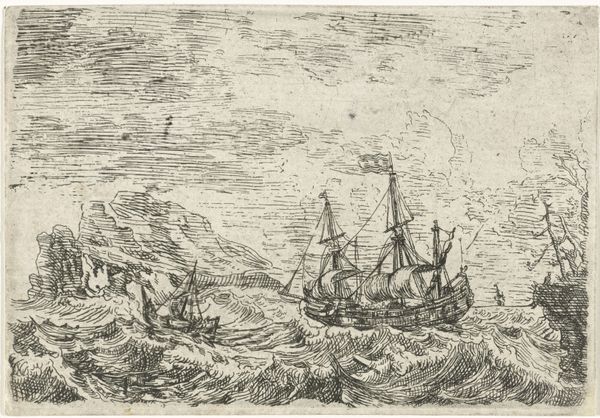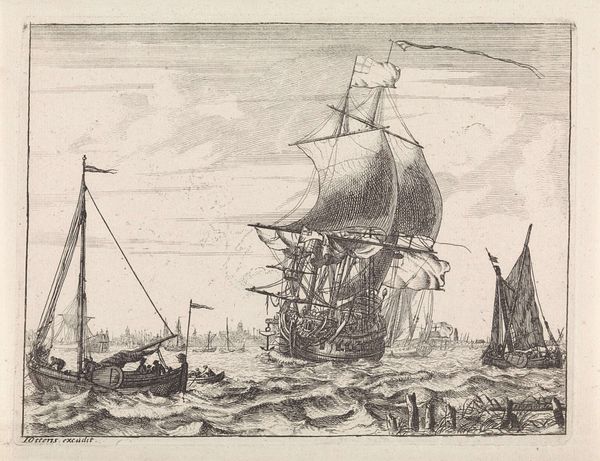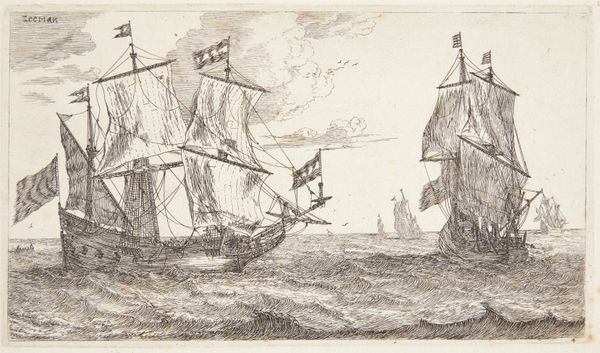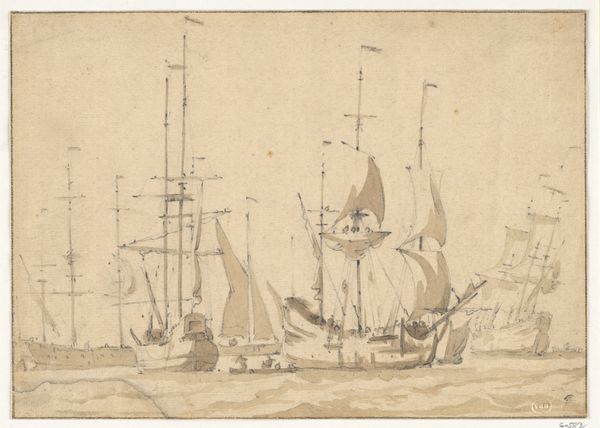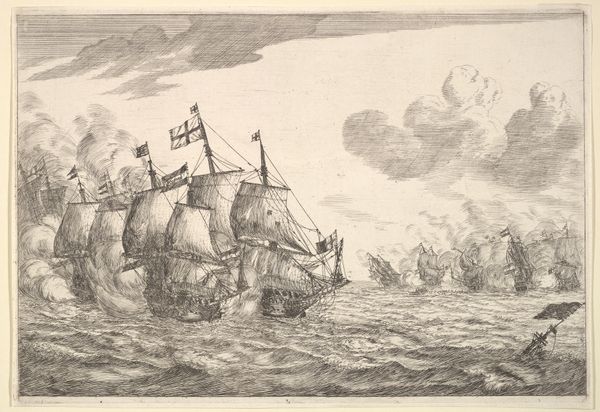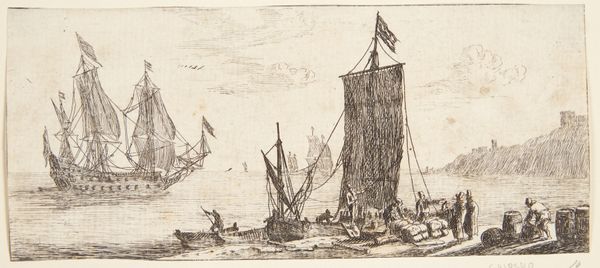
print, etching
#
dutch-golden-age
# print
#
etching
#
landscape
#
cityscape
Dimensions: 177 mm (height) x 238 mm (width) (plademaal)
Editor: So, this is "Skibe ud for Amsterdam," or "Ships off Amsterdam," a 1701 etching by Ludolf Bakhuizen. It has this fantastic sense of bustling activity. The waves are almost aggressively rendered. What symbolic weight do you see within the representation of ships? Curator: Bakhuizen, as a maritime painter, frequently employed the ship as a symbol of trade, exploration, but also of the ever-present power, and vulnerability, of the Dutch Republic. This etching captures a sense of Dutch Golden Age dynamism and expansion, but these vessels are not just boats; they are potent symbols of the period's worldview. How does that strike you when thinking about its relation to Amsterdam? Editor: It emphasizes Amsterdam’s central role in that expansion, a gateway connecting the world. The ships signify not just physical journeys but also the transfer of ideas and cultural exchange. Are the ships alluding to power or potential destruction? Curator: Precisely. The sea, while a conduit, also carries the risk of storms and conflict. This duality resonates with Amsterdam's own complex identity. Can you perceive a link to Holland's turbulent 17th century, riddled with the Anglo-Dutch Wars, particularly in his depiction of those billowing clouds? Editor: Now I see how that foreboding sky contributes, hinting at both the glory and fragility of their maritime empire. What I previously read as detail is really pregnant symbolism! Curator: And within that symbolism lies a potent reminder that the currents of history are ever-changing.
Comments
No comments
Be the first to comment and join the conversation on the ultimate creative platform.
